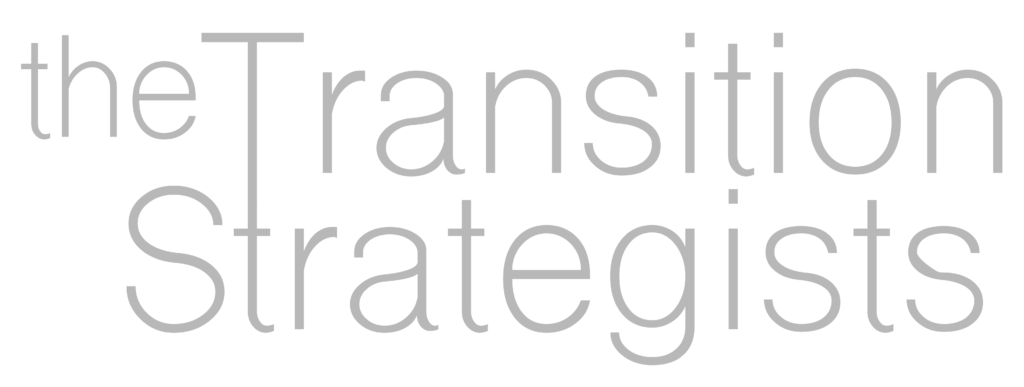Believe it or not, tire alignment comes to mind when I see owners stuck between the reality of a business transition with its confusing number of options and cacophony of opinions and the ideal—a business transition that 1) meets their goals and 2) maintains their most important relationships. Mechanics align our cars’ tires so that we reach our chosen destinations safely. As Transition Strategists, we use The Transition Compass to help you reach your chosen business transition destination with your relationships intact.
The Symptoms of Misalignment
Perhaps you recognize one or two symptoms of transition misalignment: blaming and/or shaming, people quitting or removing themselves from the transition conversation and most common of all: conflict. In family businesses, these behaviors aren’t limited to the workplace: They spill over into family conversations and events.
Reach your chosen business transition destination with your relationships intact
A Transition Planning Play in Three Acts
Act I / The Set up: The owner of a family business (Abel) has been thinking about how to transition the company into a successor’s hands for several years. Adam’s mother and father left the company equally to Abel and his two brothers Cain and Seth (Generation 2). Cain became an accountant but retained ownership, and Seth died last year. Two of Abel’s three children are involved in the business as are two of Seth’s son-in laws, and Cain’s daughter, Citha (Generation 3). Members of Generation 3 typically get along well, and those active in the business have found their niches. Everyone wonders who will “inherit the throne” yet says nothing to Abel.
Act II / The Confrontation: Abel decides to raise the topic of transition at the annual family meeting. Present at the meeting are all the members of Gen 2, as well as Gen 3, their spouses and several of their children. Abel tells the group that he’s been thinking about who should run the company when he leaves. That’s as far as he gets when people pepper him with questions: When? Why now? Then what? Questions about timing quickly become questions about leadership: How are you going to choose your successor: by who’s got what it takes, who’s worked in the company the longest, who’s most valuable to its success?
When Abel’s wife shoots him a “I told you not to bring it up” look, he promises to give the issue more thought and put it on the agenda for next year’s meeting.
A week after the meeting, Abel asks two of his trusted advisors, his CPA and attorney, for their advice about a transition. Both provide excellent legal and financial descriptions of a sale to a third party, an Employee Stock Ownership Plan or a group of key employees / family members. Abel leaves these meetings knowing more about the pros and cons of various sale methods, but still confused about what’s best for his family.
Abel returns to his office to find one of his nephew’s resignation letters on his desk. When Abel asks for an explanation, he’s told, “I’ve given everything I have to this company, but at the end of the day, I’m an in-law. All I took from that meeting is that no one agrees on anything about your departure, least of all if there’s a place for me as an ‘outsider.’ It’s time that I take care of my family.”
Abel is stunned and disappointed yet asks his nephew to give him 90 days to come up with an outline of the transition.
Act III / The Resolution: Abel reflects on the family meeting and his meetings with his two advisors. He realizes that he has both financial and relationship goals and looks for a transition strategy that addresses both. Abel calls us, sets up a meeting, and decides to dive in. After interviewing the key stakeholders, we work with Abel to identify his objectives for the transition.
As we work, family members—including Abel’s nephew—recognize that their opinions are being heard and valued. Abel grows confident that his family can manage the challenges of a complex transition as he assembles his list of objectives and identifies the ones he will not sacrifice.
Epilogue: At the next family meeting, Abel presented his Transition Compass. That Compass did not describe the details of the transition, but it summarized his answers to six questions:
Why: Abel’s goals for himself, the family, and the business
What: A description of the elements of the business that could be transitioned
Who: The qualities of the person who would lead the company
When: Abel’s timeline for leaving the business and beginning the next phase of his life
How much: An estimate of how much Abel wanted and deserved for dedicating his life to the business
How: Possible transaction structures that would meet Abel’s goals.
Reach your chosen business transition destination with your relationships intact
Abel’s Transition Compass gave him enormous peace of mind and provided a foundation for the next family meeting and all the conversations that followed.
When Abel shared his goals with family members, they recognized three of theirs:
- Keep the family together
- Keep the business under family ownership
- Change is necessary.
Abel’s family is now having the conversations—both emotional and tactical—that they had been avoiding. With the direction set, everyone is unstuck. Family members are focused on the success of the family. And the company can see that there’s a process and that they have a role in that process, and are excited to move ahead.
Do you want to reach your chosen business transition destination with your relationships intact? Call us: The Transition Strategists at (303) 790-0754.





